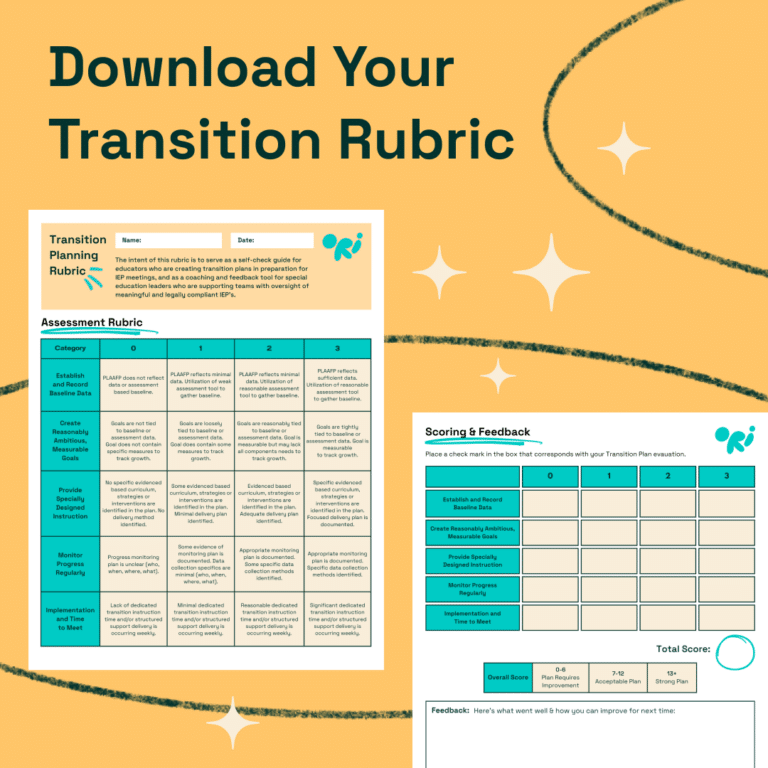


Executive functioning is essential for students to plan, organize, and complete tasks. This guide aims to assist educators in creating effective Executive Functioning IEP goals, helping students with special needs to become more independent and successful in their academic and daily lives.
Executive functioning refers to the mental skills that enable individuals to plan, focus attention, remember instructions, and juggle multiple tasks successfully. It’s particularly important for students receiving special education supports as it impacts their ability to learn and perform in school and everyday life.
Incorporating executive functioning goals into a student’s IEP is crucial. These goals help students develop skills needed for academic success and independent living, such as time management, organization, and problem-solving.
Specific: Clearly define what the student is expected to accomplish, including the specific executive functioning skills to be developed.
Measurable: Include measurable criteria to track the student’s progress towards achieving their goals.
Achievable: Set realistic goals considering the student’s abilities and resources.
Relevant: Ensure goals are directly linked to the student’s educational and life skills needs.
Time-bound: Assign a specific timeframe for achieving these goals.
Effective executive functioning IEP goals must be compliant with legal requirements and aligned with the student’s Present Levels of Academic Achievement and Functional Performance (PLAAFP). It’s essential to ensure these goals are tailored to address the specific needs identified in the PLAAFP, adhering to the guidelines set by the Individuals with Disabilities Education Act (IDEA).
Alignment with legal and educational requirements: Goals should meet the student’s unique educational needs as outlined in IDEA, ensuring they are designed to foster further education, employment, and independent living skills.
Measurable and specific: Each goal needs clear, quantifiable criteria for assessment, ensuring progress can be accurately tracked and measured.
Regular reviews and adjustments: Goals should be reviewed regularly and adjusted as needed, ensuring they continue to meet the student’s evolving needs and remain challenging and relevant.
Get the best return on your SEL investment with Ori Learning’s solution
Organizational skills
By (date), the student will demonstrate the ability to prioritize daily tasks using a to-do list or a digital organizer, improving from 0/10 tasks to 8/10 tasks prioritized correctly.
By (date), the student will independently gather and prepare all necessary materials for the next day’s classes before leaving school, showing improvement in 8/10 observed instances.
Time management
By (date), the student will break larger assignments into smaller, manageable tasks with specific deadlines, completing these tasks on time for at least 3 out of 4 assignments.
By (date), the student will start and finish classwork within the allocated time, demonstrating this ability in 8/10 class periods.
Problem-solving
By (date), when presented with a problem in class, the student will outline steps to solve it and attempt at least two solutions, improving from 0/10 opportunities to 8/10 opportunities.
By (date), the student will identify a problem in a group setting and contribute at least one viable solution, showing improvement in 7/10 group activities.
By (date), in a situation where the first solution does not work, the student will try an alternative approach, demonstrating this skill in 7/10 instances.
Task initiation
By (date), the student will begin assigned tasks within 5 minutes of instruction, improving from 0/10 opportunities to 8/10 opportunities.
By (date), the student will independently start homework within 30 minutes of returning home, as evidenced in 4 out of 5 days a week.
By (date), upon entering the classroom, the student will immediately commence their starter activity without teacher prompting in 8/10 instances.
Goal-setting
By (date), the student will set a specific academic goal each week and track their progress towards achieving it, with success in 3 out of 4 weeks.
By (date), for long-term projects, the student will set interim goals and meet them, completing at least 3 out of 4 project milestones on time.
By (date), the student will articulate personal learning goals for each subject area and take steps to achieve these, showing progress in 3 out of 4 subject areas.
Our Transition Planning Rubric is designed to support district leaders and educators in guiding their teams towards excellence in transition planning.
It provides comprehensive criteria that cover the breadth of transition planning, from gauging student engagement to evaluating post-secondary goals and services.
Expand your team’s capabilities and improve the success of IEP meetings.

Executive functioning refers to crucial mental skills that help students in special education plan, organize, and execute tasks, aiding their learning and daily activities.
Including executive functioning goals in an IEP is vital as they foster skills like time management and problem-solving, which are essential for academic success and independence.
Sample goals include organizing school materials, using a planner for assignments, and setting specific academic goals, all tailored to enhance the student’s executive functioning skills.
Incorporating executive functioning goals in a student’s IEP fosters independence and academic success. By setting SMART goals and using effective strategies, educators can significantly enhance their students’ ability to manage and excel in their educational journey and beyond.
With Ori Learning’s transition curriculum, your school or district can enjoy the peace of mind of having access to an easy-to-implement, comprehensive program that allows you to report on progress and demonstrate compliance. Find out how our curriculum can help you meet IEP goals safely and consistently by booking a call with one of our representatives today.